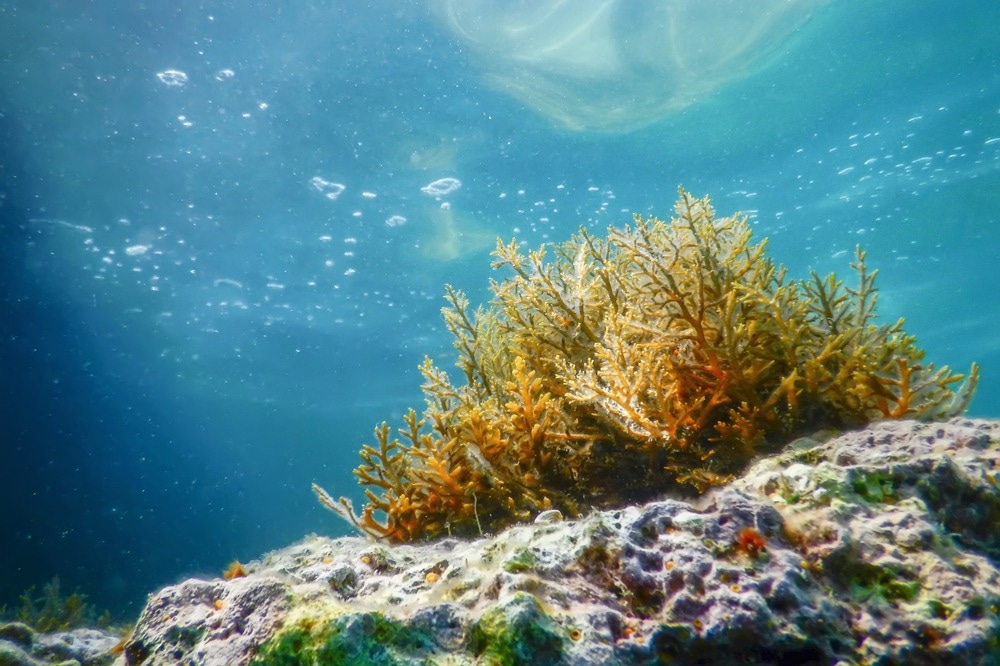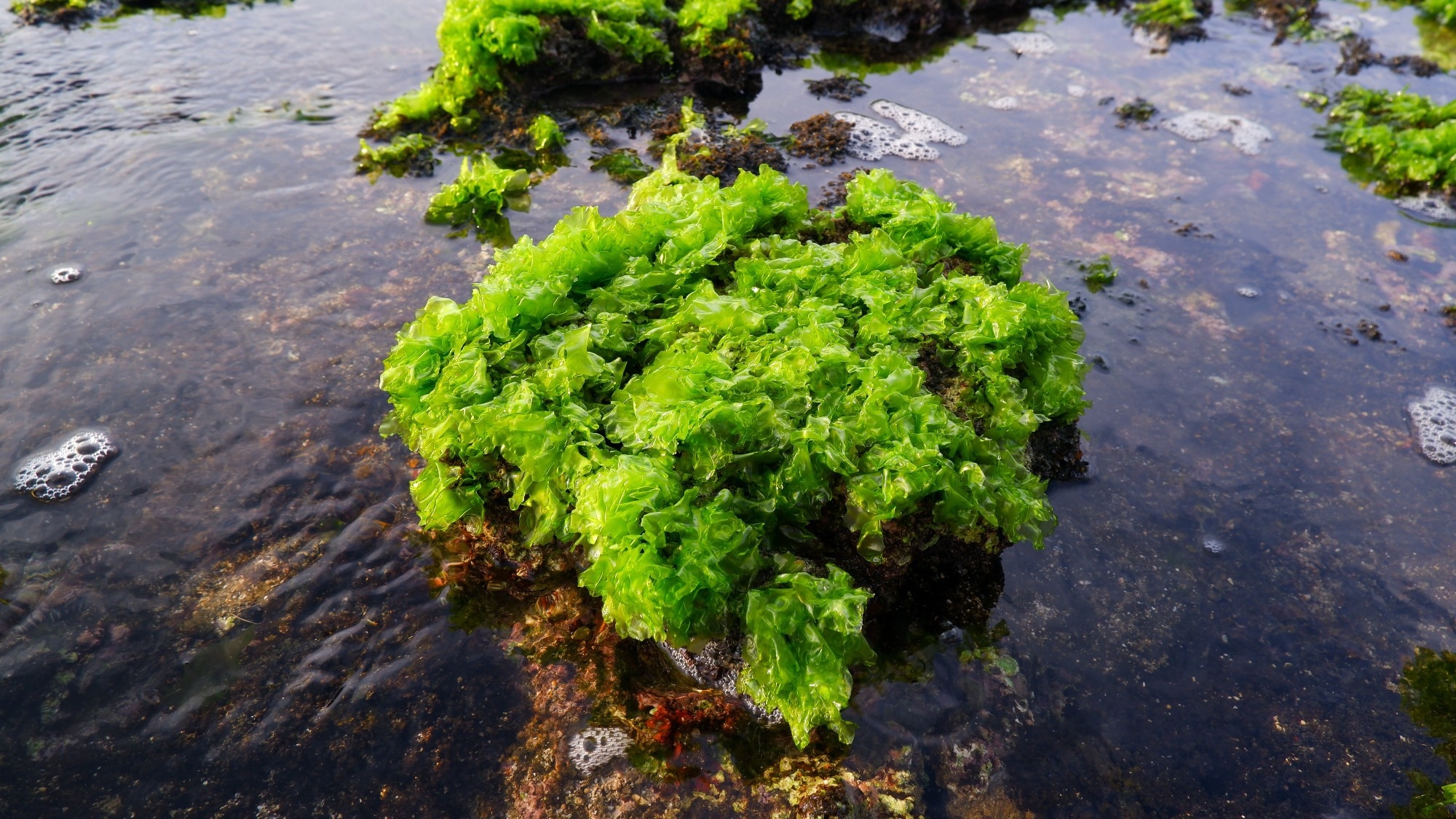Green seaweed is a macroalgae widely found in the ocean and rich in nutrition and bioactive compounds. Moreover, green seaweed exhibits numerous important biological properties, such as immunoregulation, antioxidant activity, and anti-inflammatory response.

Study: An overview on the nutritional and bioactive components of green seaweeds. Image Credit: Allexxandar / Shutterstock.com
Green seaweeds
To date, almost 169,000 seaweed species have been identified and classified into three groups based on their key pigment. These include brown seaweed (Phaeophyta), red seaweed (Rhodophyta), and green seaweed (Chlorophyta). The current article focuses on green seaweed with a high nutritional content and important bioactive components.
The composition of green seaweeds differs in accordance with species variation, season, environment, and growth stage. Some common genera of green seaweed species are Ulva, Codium, Caulerpa, Enteromorpha, and Chaetomorpha.
Nutritional and bioactive components of green seaweeds
Green seaweed is a rich source of essential amino acids, several proteins, functional peptides, and lipids. Notably, the Ulva genus may contain up to 44% of proteins.
During the summer, the edible U. intestinalis contains around 19% of protein. Some key peptide components obtained from green seaweed include lectins and Kahalalide F.
Lipids play a crucial role in maintaining human health by acting as precursors of several signaling molecules that regulate various cellular functions. Typically, the lipid content in seaweeds is lower than in proteins and carbohydrates. Nevertheless, seaweeds are rich in omega-3 and omega-6 polyunsaturated fatty acids (PUFAs). In addition, seaweed-derived dietary fibers (DFs), which are resistant to digestive enzymes, possess antioxidant, antiviral, and inflammatory properties.
Green seaweeds are a rich source of water- and fat-soluble vitamins. In addition, these plants contain a high level of important minerals, such as sodium, potassium, and calcium.
Both U. intestinalis and U. pertusa exhibit a promising sodium-to-potassium ratio, improving body fluid balance. Ulva and Enteromorpha contain magnesium, which is essential for catalytic functions. Other important elements, such as manganese, cobalt, iodine, iron, copper, selenium, and zinc, have also been isolated from green seaweeds.
 Ulva lactuca, also known sea lettuce. Image Credit: f.maliki / Shutterstock
Ulva lactuca, also known sea lettuce. Image Credit: f.maliki / Shutterstock
A varied level of polysaccharides has been obtained from different green seaweed species. Ulva spp. exhibits a high polysaccharides content consisting of rhamnose, sulfate, xylose, and glucuronic acid.
A high level of polyphenols has also been obtained from different species of green seaweeds, such as E. prolifera. Polyphenols constitute several compounds, such as phenolic acids, lignans, flavonoids, and stilbenes, which have many biological functions.
Important forms of sterols, such as ergosterol, cholesterol, and 28-isofucosterol, have been obtained from Chaetomorpha, Ulva, and Codium. Plant sterols have anti-inflammatory effects, which can be used to reduce cardiovascular disease risk by lowering cholesterol levels. Terpene is another metabolite that is present in green seaweeds and possesses potent cytotoxicity that can inhibit tumor growth.
Green seaweeds have a high content of chlorophyll a and chlorophyll b, which are pigments used to treat patients exposed to lipophilic toxic substances. Other pigments that are present in this type of macroalgae include xanthophylls, xanthophyll carotenoid, and siphonaxanthin.
Applications
Several studies have highlighted the applications of different species of green seaweeds.
Food
U. lactuca, also known as sea lettuce, is naturally found in rocks and sublittoral waters worldwide. This soft seaweed has lower stickiness, elastic and cohesive properties.
In many Asian countries, seaweed, such as Cladophora spp., has been used as food. Seaweeds are consumed both as processed and non-processed food.
Seaweeds are often ground to a fine powder and added to bakery or starchy foods to improve their nutritional content. These plants are also used to improve the flavor and texture of food products. Foods with high DF content enhance the sense of satiety, reduce cholesterol and blood glucose levels, and alleviate constipation.
Medicine
Protein-derived peptides could be used as chemosynthetic drug candidates in the pharmaceutical and biotechnological industries.
Kahalalide F is a cyclic peptide that is extracted from Bryopsis sp. (green seaweed) and is associated with certain anti-tumor activities. Lectin, a carbohydrate-binding protein, is found in many species of green seaweed, including C. isthmocladum, and is associated with anti-inflammatory, antimicrobial, and cytotoxic properties.
Soluble DFs lower blood cholesterol and glucose levels, as well as alleviate constipation by enhancing the volume of excreta to support intestinal peristalsis. Most Ulva species possess a higher level of soluble DFs. Moreover, polysaccharides extracted from Ulva species have demonstrated antioxidant, anti-hyperlipidemic, anti-cancer, anti-coagulant, and anti-influenza activities.
Cosmetics
Seaweeds have been used in cosmetics as ingredients, additives, and active agents, as they improve the texture-related characteristics, such as wetting, emulsification, and thickening properties of cosmetic products.
Aosaine, a hydrolyzed extract obtained from U. lactuca, exhibits anti-aging, collagen-stimulating, and anti-wrinkle properties. Vitamins, particularly B complex, extracted from green seaweeds, are also associated with various beneficial effects on human skin.
Journal reference:
- Xu, J., Liao, W., Liu, Y., et al. (2023) An overview on the nutritional and bioactive components of green seaweeds. Food Production, Processing and Nutrition 5(18). doi:10.1186/s43014-023-00132-5